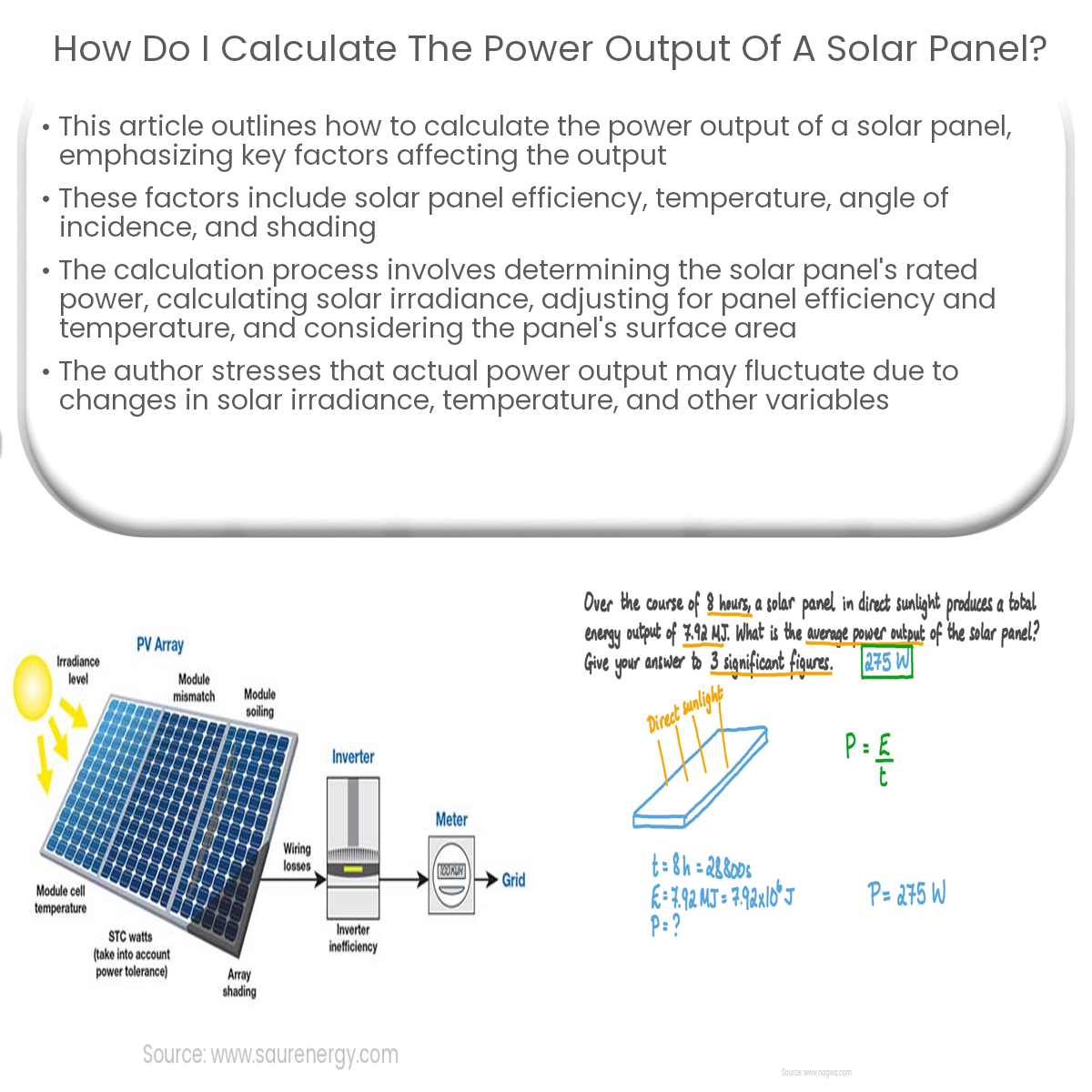To calculate solar panel output, consider its rated power, solar irradiance, efficiency, temperature, and surface area, then make necessary adjustments.
Calculating the Power Output of a Solar Panel
Understanding how to calculate the power output of a solar panel is essential to determine the efficiency and suitability of a solar panel for a specific project. In this article, we will discuss the factors affecting solar panel output and the steps to calculate it.
Factors Affecting Solar Panel Output
- Solar panel efficiency: Solar panel efficiency refers to the percentage of solar energy that can be converted into usable electricity. Higher efficiency panels will produce more power output.
- Temperature: Higher temperatures can reduce the efficiency of solar panels, leading to lower power output. It is crucial to consider temperature coefficients when calculating output.
- Angle of incidence: The angle at which sunlight strikes the solar panel can affect its power output. Solar panels should be installed at an optimal angle to maximize power generation.
- Shading: Any shading on the solar panel will reduce its power output. Ensure that solar panels are installed in a location with minimal shading throughout the day.
Steps to Calculate Power Output
- Determine the solar panel’s rated power: The rated power of a solar panel, measured in watts (W), can be found on the panel’s datasheet or label.
- Calculate the solar irradiance: Solar irradiance is the amount of sunlight energy that reaches a specific area, typically measured in watts per square meter (W/m2). You can find solar irradiance data for your location from online resources or solar energy calculators.
- Factor in the panel efficiency: Multiply the solar irradiance by the solar panel’s efficiency (expressed as a decimal) to calculate the amount of solar energy converted into electricity.
- Adjust for temperature: Use the panel’s temperature coefficient to determine the decrease in efficiency due to temperature. Subtract this percentage from the energy conversion result.
- Calculate the power output: Finally, multiply the adjusted energy conversion by the solar panel’s surface area to determine its power output.
By following these steps, you can calculate the power output of a solar panel and better understand its performance in your specific project. Keep in mind that actual power output may vary due to fluctuations in solar irradiance, temperature, and other factors.


